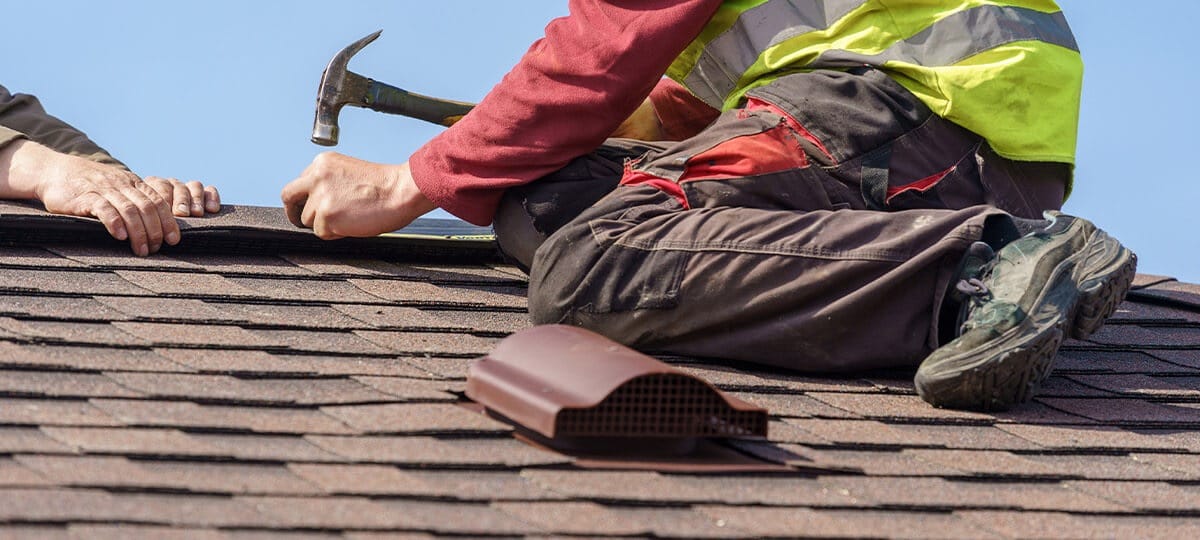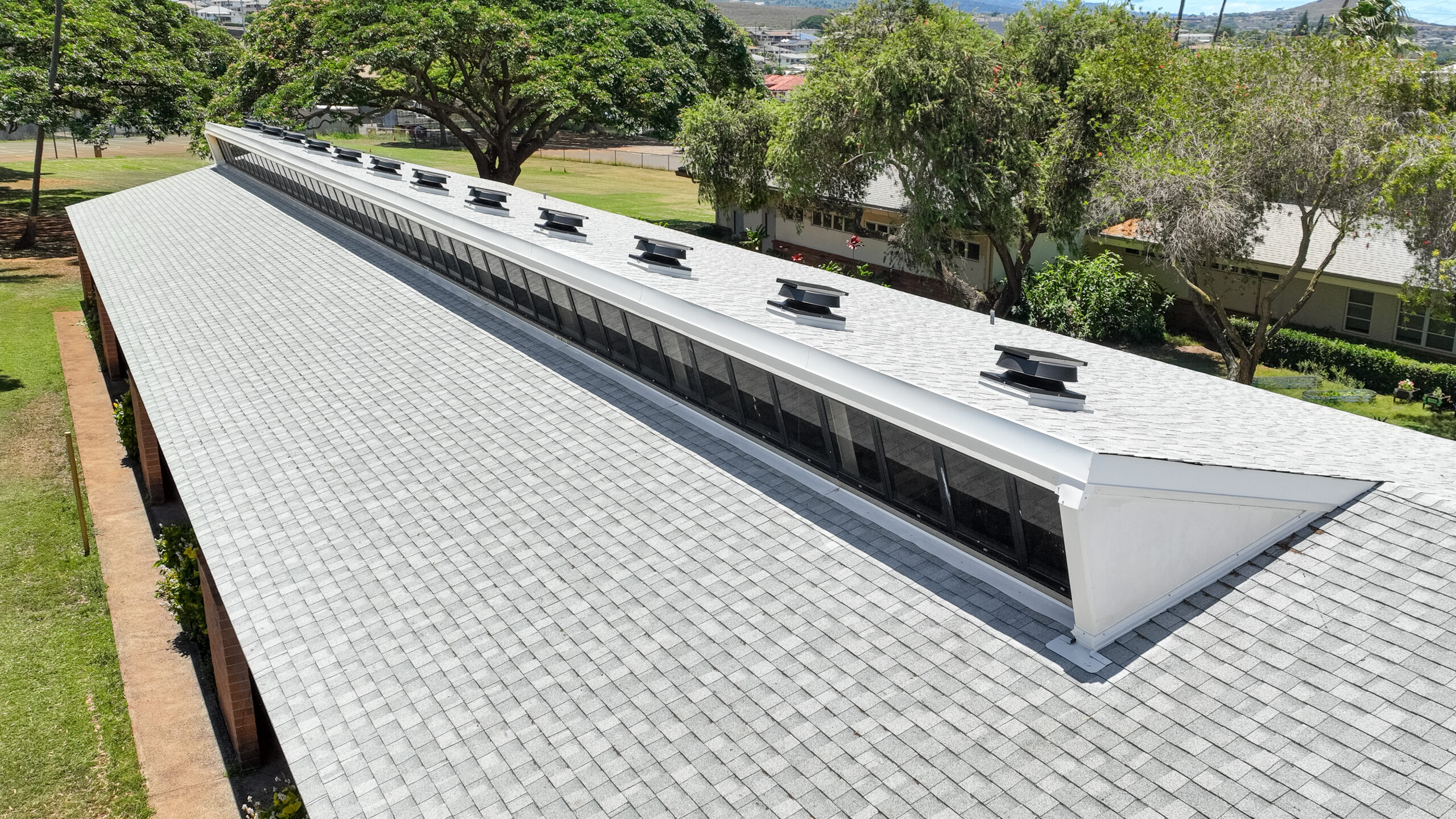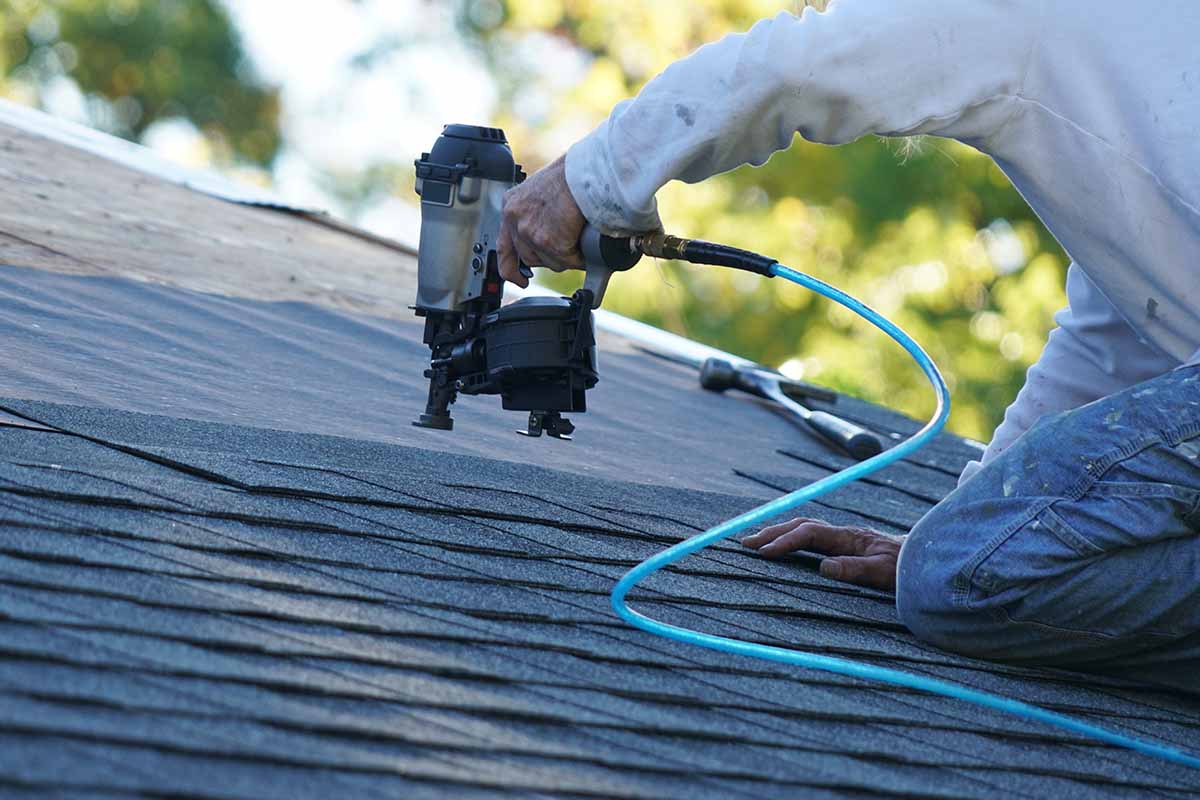Uncover Common Roofing Issues and How to Address Them Successfully
When it comes to your roofing system, detecting troubles early can save you time and cash. What specific steps should you take to guarantee your roofing remains in leading condition?
Identifying Roof Covering Leaks and Their Reasons

Next, examine your roof covering from the exterior. Look for missing or split tiles, rusted flashing, or damaged seamless gutters. Take notice of areas around smokeshafts, vents, and skylights, as these prevail leak sources. If you detect any of these issues, it's vital to address them immediately.
During hefty rainfall, observe your roof for any kind of pooling water or drips. This can reveal leakages that might not be noticeable during dry problems. By staying alert and routinely checking your roof covering, you can catch leakages early and shield your home from further damage.
Managing Missing Out On or Harmed Shingles
When you see missing or harmed roof shingles, it's essential to act quickly to avoid more issues. You'll desire to recognize the level of the damages, repair any type of missing out on roof shingles, and take into consideration preventative maintenance ideas to keep your roofing in leading shape. Taking these steps can save you money and time in the future.
Identifying Tile Damage
Although shingles are developed to stand up to the components, they can still experience damage in time, leading to prospective leakages and pricey repair services. To determine shingle damages, beginning by checking your roofing system for missing out on, cracked, or crinkled roof shingles. Look for indications of staining or granule loss, which can show damage. Take notice of any locations where roof shingles are lifting or distorting, as these can produce susceptabilities. It's likewise a good idea to look for water stains or mold on your ceilings and wall surfaces, as these might indicate leaks originating from harmed shingles. Frequently monitoring your roof, especially after serious climate, can assist you catch issues early and keep the honesty of your home.
Repairing Missing Out On Roof Shingles
After detecting tile damage, the next action is addressing any missing out on or damaged tiles immediately to avoid additional concerns. Start by inspecting the damaged area and determining the number of shingles require substitute. If you can, climb onto your roof securely, using appropriate gear. Eliminate any type of damaged tiles thoroughly utilizing a lever. Once you have actually cleared the location, slide in the brand-new shingles, ensuring they align with the existing ones. Protect them with roofing nails and use roof covering adhesive for added security. Do not fail to remember to seal the sides to avoid water seepage. If you're awkward with the fixing, it's smart to call an expert. Doing something about it quickly will help keep your roof's stability and extend its life-span.
Preventive Upkeep Tips
Exactly how can you keep your roof in leading form and protect against roof shingles from going missing out on or obtaining harmed? Inspect your roofing at least twice a year and after extreme weather (roofing contractors oahu).
Keep seamless gutters clean and without debris to guarantee correct water circulation and stop shingle damage. Cut overhanging branches to lessen the danger of them scratching against your roof throughout tornados.
Take into consideration using a protective sealer to prolong your tiles' life expectancy. Finally, if you notice any type of issues, address them quickly to stay clear of costly repair services later. Taking these safety nets can save you money and time while assuring your roofing system continues to be resilient and dependable.
Understanding Roofing System Air Flow Issues
Proper roofing system ventilation is essential for preserving the longevity and effectiveness of your roofing system, as it aids manage temperature and dampness degrees in your attic. Without appropriate ventilation, you may face problems like extreme warmth build-up, leading to early roof shingles degeneration, or boosted humidity that can create mold and mildew growth and wood rot.
To assess your roof covering air flow, look for indicators of overheating, such as deformed tiles or a hot attic room. Look for blocked vents, which can limit air flow and trap heat. You must ensure your intake and exhaust vents are balanced, enabling proper air exchange.
If you presume air flow issues, think about installing additional vents or updating existing ones. Ridge vents, soffit vents, and gable vents can all improve air flow. Dealing with these problems immediately can protect your roofing and save you from expensive repair work down the line. Remain aggressive in keeping your roof covering's ventilation to protect your home.
Attending To Roofing System Moss and Algae Development
While you may value the all-natural look of moss and algae on your roof covering, these organisms can lead to substantial troubles if left untreated. Utilize a soft-bristle brush to delicately scrub away the moss and algae, being mindful not to damage your tiles.
Next, think about using a specialized roof covering cleaner or a blend of water and bleach to kill remaining spores. Rinse completely to prevent any kind of chemical damage. Furthermore, mount zinc or copper strips along the ridge of your roofing system. As rainfall washes over these metals, it produces a protective obstacle versus future development. Regular evaluations and upkeep will aid stop moss and algae from returning, guaranteeing your roof covering stays in good form for several years ahead.
Fixing Tornado Damage and Wind Problems
After a storm, it's essential to examine your roofing for damages brought on by high winds and hefty rainfall. Beginning web link by looking for missing out on or damaged shingles, as these prevail casualties. If you observe any type of, it is very important to replace them without delay to stop leakages. Next, check the blinking around smokeshafts and vents; harmed blinking can bring about water penetration.
Seek any type of sagging locations, which might indicate water accumulation or structural issues. If you find any check over here type of particles, like branches or leaves, eliminate them meticulously to stay clear of additional damage. If your gutters are obstructed, clear them to assure correct water drainage.

For tiny repair work, you might manage it yourself, however don't be reluctant to call an expert for substantial damage. Remember, acting promptly can conserve you from larger problems down the line, so take that evaluation seriously and address any type of problems asap.
Identifying Signs of Architectural Damages
Just how can you tell if your roof covering is enduring from structural damages? Begin by seeking visible sagging or dips in your roofline. These indications show that the underlying framework might be endangered. Next off, look for fractures or spaces in the wall surfaces or ceiling, as these can signal shifting or working out because of roofing system issues. Take note of leaks or water spots, especially in areas where the roofing meets walls. If you observe missing out on or broken roof shingles, it's necessary to address them quickly, as they can subject your roofing system to further damages. Examine your attic for any signs of daylight looking through, which could indicate your roofing's stability is at danger. Pay attention for uncommon creaking or popping noises, as they might suggest structural anxiety. If you notice any one of these indications, it's time to consult a roof expert for a complete evaluation.
Routine Maintenance Tips for Durability

Regular Examinations Importance
Because a roof covering is your home's very first line of protection against the components, regular examinations are necessary for maintaining its honesty. You ought to examine your roofing system at the very least twice a year, preferably in springtime and loss, to catch possible problems early. Keeping up with these inspections can protect against pricey repair services down the line and extend your roof's lifespan, ensuring your home continues to be safe and sound for years to come.
Appropriate Gutter Upkeep
Normal roof covering examinations naturally lead to the importance of correct seamless gutter upkeep. Examine your gutters for leakages or rust; they can create water damages to your roofing system and home. By following these tips, you'll expand your rain gutters' lifespan and secure your roofing system.
Frequently Asked Concerns
How Can I Pick the Right Roof Product for My Home?
To select the right roof wikipedia reference covering material for your home, take into consideration climate, resilience, and aesthetic appeals. Study choices like asphalt tiles, metal, or floor tile. Consider maintenance demands and budget to locate what suits you finest.
What Are the Signs I Need a Roof Replacement As Opposed To Repair?
If you observe widespread leaks, drooping, or missing out on shingles, you may require a roofing system substitute. Additionally, if your roofing system's nearing its life-span or has significant damage, it's time to consider a complete replacement as opposed to just fixings.
Exactly how Commonly Should I Set Up Professional Roofing System Assessments?
You need to arrange specialist roof covering evaluations at least yearly, ideally in spring or fall. This helps catch potential concerns early, ensuring your roof continues to be in great problem and extending its lifespan.
Can I Set Up a New Roof Over My Old One?
You can mount a brand-new roof covering over your old one, yet it's vital to inspect regional building regulations and ensure the existing roofing's problem is sound. This method can save money and time, but consider potential complications.
What Is the Ordinary Life-span of Various Roof Materials?
The average lifespan differs by product: asphalt roof shingles last 15-30 years, metal roofs can last 40-70 years, while floor tile or slate roof coverings might surpass 50 years. Choose wisely based upon your environment and budget plan.
Conclusion
By remaining cautious and resolving usual roof issues quickly, you can protect your home and extend your roof covering's life expectancy. Consistently check for leakages, damaged tiles, and ventilation issues, and take on moss or algae growth prior to it aggravates - roofing materials hawaii. After tornados, check for any kind of damage and make required repairs. With a little regular maintenance, you'll not just protect your financial investment however also take pleasure in assurance recognizing your roofing system remains in top shape. Do not wait-- act now!